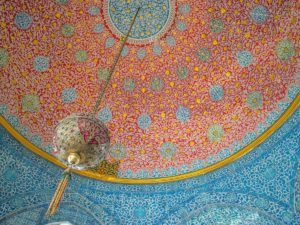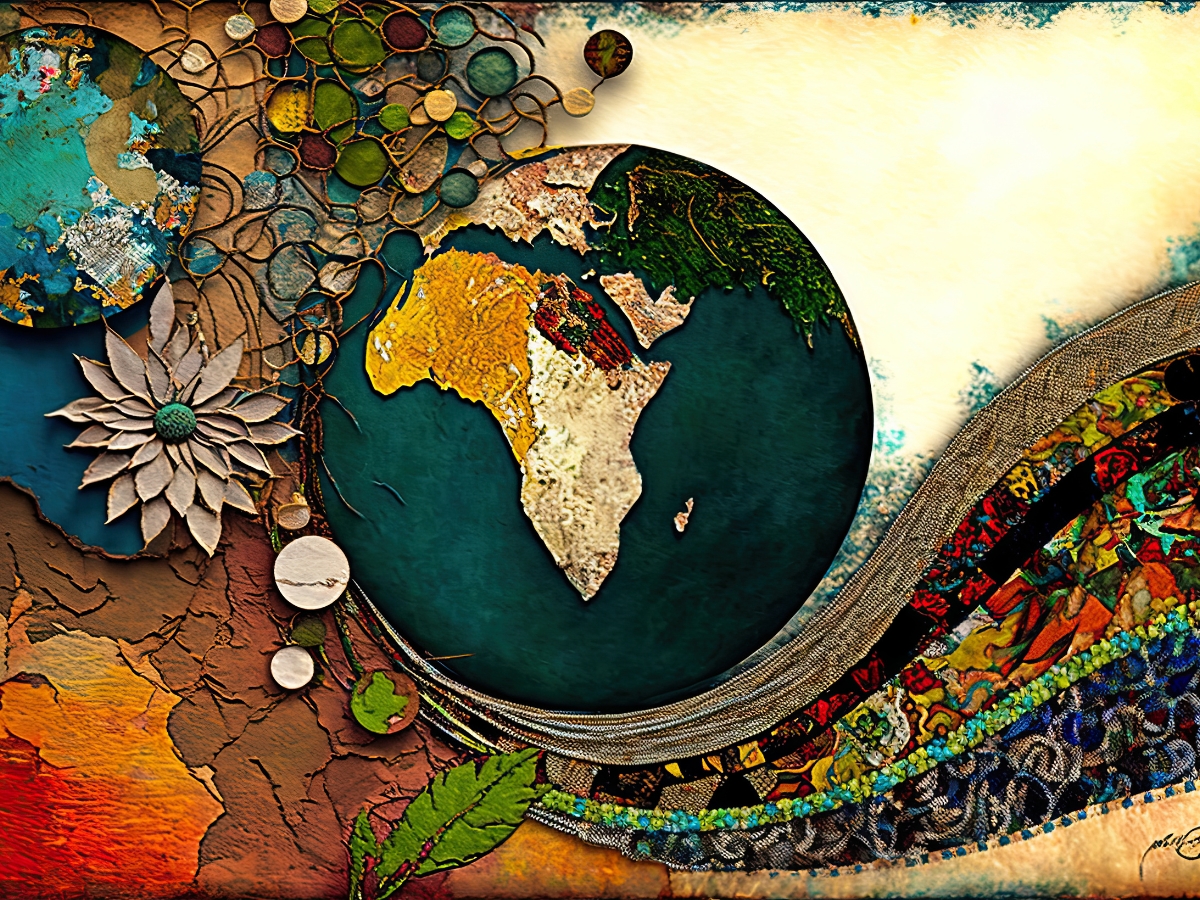This blog will delve into the incredible impact of Islamic art on world art. Islamic art is a unique form of art that has been around for centuries and is known for its all-encompassing nature and its influence on art forms and styles worldwide. From its beginnings in the Middle East to its spread to other parts of the world, Islamic art has left its mark on art forms ranging from architecture to calligraphy to painting. This blog will look at how Islamic art has been adopted and adapted by different cultures and how it continues to shape contemporary art. By exploring the impact of Islamic art on world art, we can gain insight into the richness and complexity of art forms and how different
Impact of Islamic Art on World Art
Islamic Art is a rich and diverse cultural heritage that has influenced the world of arts in countless ways. Islamic Art has left an indelible mark on the global artistic landscape, from its traditional arabesque designs, geometric patterns, and calligraphy styles to its modern digital media tools and revival of ancient forms. The impact of Islamic Art can be seen across various fields of visual arts, architecture, painting, sculpture, education, and culture. In this blog post, we will delve into the fascinating history of Islamic Art and explore how it has shaped world art throughout the ages. So fasten your seatbelts and get ready for an insightful journey through the mesmerizing world of Islamic Art!
A Brief Overview of Islamic Art and its Cultural Heritage
Islamic Art is a diverse and multifaceted form of artistic expression rooted in the Islamic religion. It encompasses various fields of visual arts, including calligraphy, painting, ceramics, textiles, metalwork, and architecture. The traditional arabesque designs, geometric patterns, and calligraphy styles are some of the hallmarks of Islamic Art.
Islamic Art’s rich cultural heritage dates back to the 7th century when Islam emerged as a major world religion. Its influence can be seen across regions such as North Africa, Central Asia, Persia (Iran), Turkey, and India. Despite being associated with religious practices initially, Islamic Art transcended beyond it by becoming an important part of social life.
One unique aspect of Islamic Art is its prohibition against depicting human figures or animals in their artwork, thus encouraging artists to focus on geometry- a closer reflection of God’s creation by many scholars-. This resulted in intricate geometric shapes being used extensively throughout this genre.
Despite having solid historical influences from Arab culture due to early spread through conquests, the Indian subcontinent saw remarkable contributions towards it, especially under the Mughal Empire’s reign, where Persian aesthetics blended seamlessly with Hindu motifs resulting in some impressive pieces of work like the Taj Mahal, among others.

Understanding the Basics of Islamic Art and its Main Components
Islamic Art is a visual representation of the Islamic faith and culture, which includes diverse forms of artistic expression such as calligraphy, architecture, textiles, ceramics, metalwork, and painting. It is primarily known for its intricate designs and ornamental patterns derived from nature or abstract geometry.
One of the main components of Islamic Art is arabesque designs – an interlacing pattern consisting of floral elements or geometric shapes. These designs often have symbolic meanings related to spirituality or religion.
Another significant component is geometric patterns – complex mathematical shapes used in decorative and architectural works. The use of symmetry and repetition in these patterns reflects the idea of unity within Islam.
Calligraphy styles also play an essential role in Islamic art. Arabic script is considered sacred because it was used to write down the Quran, making it necessary for religious purposes. Calligraphers must perfect their skills to create beautiful works that convey meaning through form.
Islamic Art’s emphasis on decoration instead of depiction has made it unique amongst other world arts. It remains popular today due to its elegance, beauty, and spiritual significance across different cultures worldwide.
How Islamic Art Has Influenced World Arts & Culture over the Years
Islamic Art has not only been a source of inspiration for the Muslim world but also an important influence on other cultures and societies around the globe. Its unique design elements, such as arabesque designs, geometric patterns, and calligraphy styles, have significantly impacted the world’s artistic expression.
The spread of Islamic Art through various empires has influenced many regions differently. The Mughal Empire was one example that left a lasting impression across India with its intricate use of motifs and detailed craftsmanship. Similarly, Ottoman Empire arts have had far-reaching impacts throughout Europe.
Islamic Art has even made its mark in Western culture through architectural styles like Moorish Revival architecture and Persian-inspired textiles. The Far East also saw significant influences from Islamic art forms during the 14th century when Chinese artists started incorporating Arabic script into their paintings.
Even today, contemporary digital media technologies are reviving traditional Islamic arts using computer-aided design techniques to create mesmerizing patterns and designs that appeal globally. This resurgence is bringing back forgotten techniques while still preserving Islamic cultural heritage.
Islamic Art continues to be a valuable part of global artistic expression due to its beauty, uniqueness, and contribution to cultural diversity worldwide.
Exploring the Impact of Mughal and Ottoman Empire Arts across the World
The Mughal and Ottoman Empires were among history’s most influential Islamic empires. Both empires left a lasting impact on the world through their arts and culture. The Mughals, who ruled India from 1526 to 1858, were known for their love of beauty and sophistication in Art. Their patronage led to the creation of some of the most beautiful works of Art that are still admired today.
One of the most significant contributions made by the Mughals was in architecture. They built incredible structures like the Taj Mahal, considered one of the world’s seven wonders. These buildings featured intricate carvings, detailed decorations, and symmetrical designs that continue to inspire architects around the globe.
The Ottomans also significantly impacted Islamic Art with their unique style that blended Eastern and Western influences. They created stunning ceramics adorned with calligraphy styles using arabesque designs as well as textiles featuring floral motifs.
Their influence extended beyond just traditional arts; they also developed new techniques such as marbling (Ebru), where colors are dispersed into the water before being transferred onto paper or fabric, creating mesmerizing patterns.
Unsurprisingly, both these great empires have had an enduring impact on global culture through their artistic legacies. Whether architectural marvels or decorative objects, each piece showcases masterful craftsmanship and highlights Islamic Art’s integral role in shaping our modern world today.
Islamic Art’s Impact on Western and Far Eastern Cultures
Islamic Art has significantly impacted Western and Far Eastern cultures, with its influence spanning centuries. In the West, Islamic Art was initially viewed as exotic and foreign, but it gradually became appreciated for its intricate designs and patterns. Islamic motifs started appearing in European decorative arts during the 19th century, and by the early 20th century, they became a staple of the Art Nouveau style.
In addition to influencing European aesthetics, Islamic Art also impacted Far Eastern cultures. The Chinese were particularly taken with Arabic calligraphy styles and adapted them into their writing system. Similarly, Japanese artisans incorporated elements of Arabesque design into their pottery.
Moreover, Islamic architecture inspired many Western architects who sought to emulate its grandeur and elegance in their constructions. The Gothic revival movement in Europe is one example where designers looked towards the Moorish Revival style for inspiration.
Islamic Art’s impact on Western and Far Eastern cultures has been far-reaching and inspires artists worldwide today.
The Resurgence of Islamic Art in Modern Times & Its Global Appeal
The resurgence of Islamic Art in modern times has been a remarkable phenomenon that has caught the attention of art enthusiasts worldwide. From traditional calligraphy styles to intricate arabesque designs and geometric patterns, Islamic art forms have returned to mainstream contemporary Art.
One reason for this resurgence is the revival of interest in traditional arts and cultural heritage. With globalization and digitization taking over, people are seeking ways to reconnect with their roots and appreciate traditional practices.
Another factor contributing to the global appeal of Islamic Art is its universality. The abstract nature of Islamic motifs allows them to transcend geographical boundaries, making them accessible and appreciated by people from all cultures.
Moreover, advancements in computer-aided design techniques have helped artists create stunning pieces that merge tradition with modern technology. Social media platforms like Instagram have also been crucial in promoting these artworks globally.
The rebirth of Islamic art forms represents more than just artistic expression; it’s a movement toward preserving cultural heritage while embracing innovation. It’s exciting to see how these age-old traditions continue to inspire new generations around the globe.
Impact of Contemporary Digital Media Technologies on Islamic Arts
As we move into the digital age, Islamic Art is experiencing a resurgence through computer-aided design techniques and modern printing technologies. The use of digital media tools has allowed for the revival of traditional art forms and has given new life to ancient arabesque designs, geometric patterns, and calligraphy styles.
These advancements have also made Islamic Art accessible to a global audience like never before. Artists from around the world are now able to connect and share their work on social media platforms. This has led to an exchange of ideas, styles, and techniques that are helping to shape contemporary Islamic Art.
Islamic Art has had a significant impact on world art throughout history. From its rich cultural heritage to its influence on Western and Eastern cultures alike, this unique artistic expression inspires artists today. As technology continues to evolve at an unprecedented pace, it will be exciting to see how these developments continue to shape the future of Islamic Art in our increasingly interconnected world.
